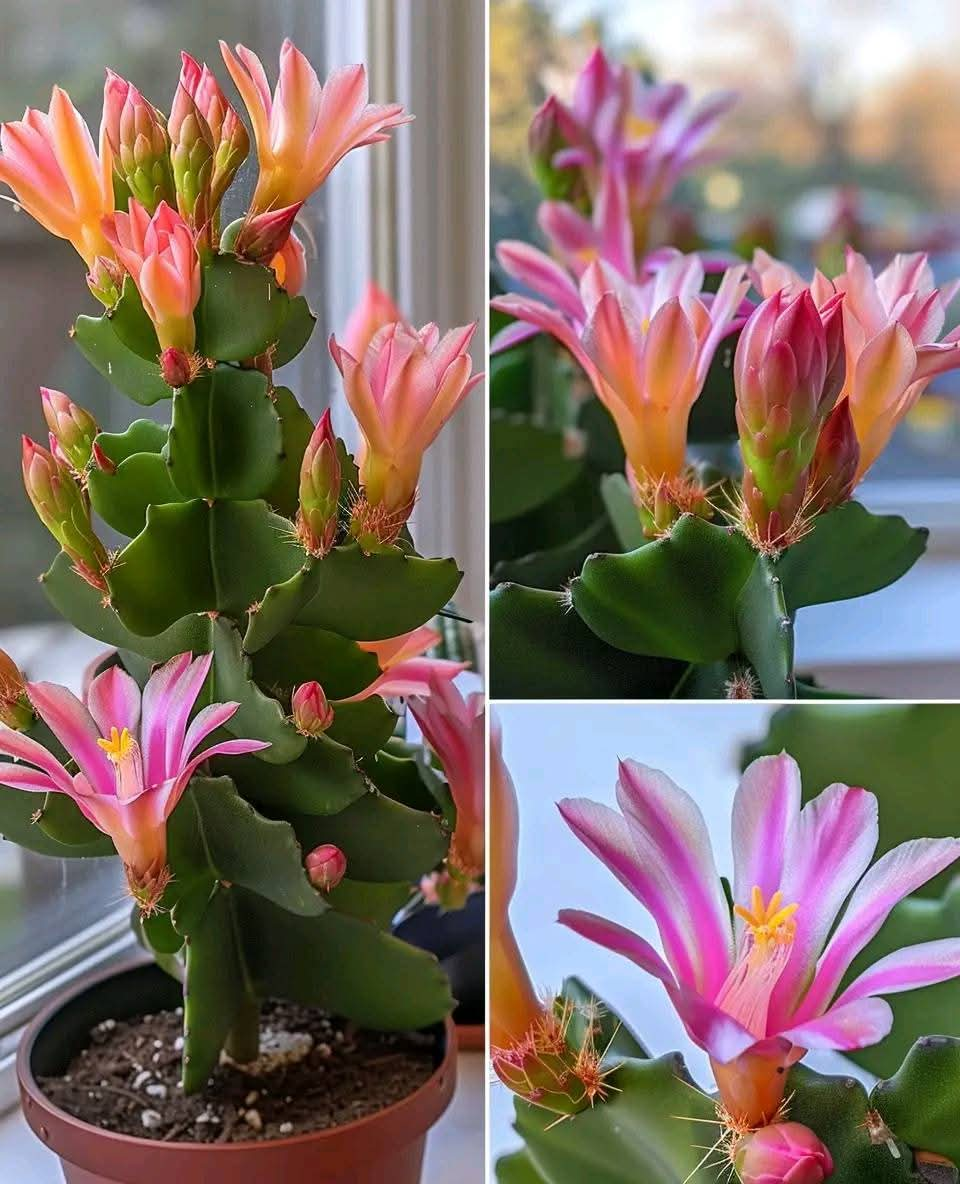With the right care and attention, your Christmas cactus (Schlumbergera) can reward you with vibrant blooms throughout the year. Follow these simple tips to ensure your plant thrives and flowers repeatedly.
Identifying Varieties
Recognize which holiday cactus you own to understand its blooming habits:
Thanksgiving Cactus (Schlumbergera truncata): Features pointed, claw-like leaf segments and blooms in late November.
Christmas Cactus (Schlumbergera bridgesii): Rounded segments and blooms in December.
Easter Cactus (Rhipsalidopsis): Symmetrical, scalloped leaf segments and blooms in spring.
Knowing the variety helps tailor your care routine for year-round flowering.
Optimal Environment
Light: Place your cactus in bright, indirect sunlight. Avoid direct sun, especially in summer, as it can scorch the leaves.
Temperature: Maintain temperatures between 60-75°F (15-24°C). If temperatures drop below 50°F (10°C), bring the plant indoors.
Placement: Avoid drafts, heat vents, and sudden environmental changes, as these can disrupt flowering.
Watering and Humidity
Watering:
Water thoroughly when the top inch of soil feels dry.
Avoid waterlogging by ensuring proper drainage.
Humidity:
Christmas cacti prefer moderate humidity. Use a water-and-pebble tray nearby or mist the plant occasionally to increase humidity.
Nutrition and Repotting
Fertilizing:
During blooming: Feed monthly with a balanced fertilizer.
Post-bloom: Switch to bi-weekly feeding to encourage recovery and growth.
Repotting:
Only repot every 2-3 years, or when root-bound. Use a potting mix formulated for cacti or a blend of potting soil, perlite, and peat for excellent drainage.
Inducing Blooms
Encourage your Christmas cactus to bloom multiple times by simulating its natural environment:
- Darkness:
Provide 12-14 hours of uninterrupted darkness daily for about four weeks.
Place it in a dark room or cover it with a cloth during this time.
- Cooler Temperatures:
Keep the plant in a space with temperatures around 50-55°F (10-13°C) during the dark phase.
- Post-Darkness Care:
After this period, return the plant to bright, indirect light to stimulate blooming.
Repeat this process after each flowering cycle for additional blooms.
Propagation
After blooming, propagate your Christmas cactus to grow new plants:
Take Cuttings: Cut segments of 2-3 leaves.
Dry the Cuttings: Let them sit for 24 hours to form a callus.
Plant the Cuttings: Place them in a well-draining soil mix, keep slightly moist, and position in bright, indirect light.
Additional Tips for Continuous Blooms
Stress Encourages Blooms: Controlled stress, like cooler temperatures and reduced light, promotes flowering.
Avoid Overwatering: Overwatering leads to root rot, a common issue with holiday cacti.
Prune Strategically: Trim leggy or excess growth after flowering to maintain a compact, healthy shape.
Rotate the Plant: Turn the pot occasionally for even growth and light exposure.
With consistent care and these simple adjustments, your Christmas cactus can brighten your home with stunning blooms throughout the year.
